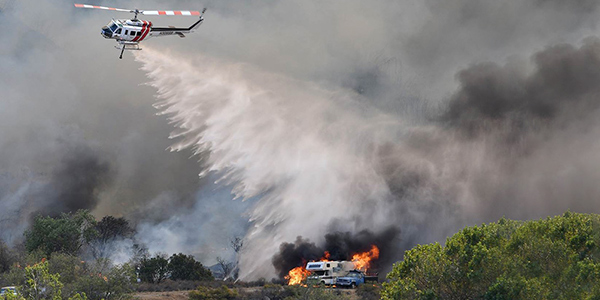Many utilities in the Western Interconnection continue to use outdated models for their solar and wind generation resources, or none at all, despite warnings about their reliability, according to a joint report issued this week by NERC and WECC.
The report, “WECC Base Case Review: Inverter-Based Resources,” is based on a review of steady-state power flow data posted to the regional entity’s website in May. NERC and WECC undertook the review as part of their ongoing efforts to address shortcomings in inverter-based resource modeling discovered following the Blue Cut Fire of 2016 and the Canyon 2 Fire of 2017, both in California.
The 2016 incident led to about 1,200 MW of solar photovoltaic resources tripping offline or momentarily ceasing output, while Canyon 2 resulted in about 900 MW of solar output tripping or momentarily ceasing. NERC issued alerts following both disturbances seeking information from registered entities on solar generation in their footprints and how they plan for the loss of resources. (See NERC Chief: Inverter, Fuel Assurance Standards Needed.)
Information from the alerts — particularly the Canyon 2 alert, which focused on modeling issues — was used by NERC’s Inverter-based Resource Performance Task Force (IRPTF) in a technical report earlier this year to describe the challenges that utilities and inverter manufacturers face with “ensuring the models used to represent [inverter-based] resources … sufficiently represent [their] actual behavior.”
The new report aims to highlight some of those resources in greater detail, focusing on the Western Interconnection because of the “large concentration” of bulk power system-connected solar and wind generators in the region. The two accounted for 17% of overall generation capacity in May, with instantaneous penetration of such resources rising over 50% in CAISO’s footprint.
In addition, the study is intended to help the WECC Solar Modeling Advisory Group, which was formed last year to help transmission planners and planning coordinators in the Western Interconnection improve their modeling activities but has made little progress, citing a lack of reliable data.
Outdated, Inaccurate Models Persist
In their analysis, NERC and WECC found that a significant amount of inverter-based resources used improper or insufficient models. The issues were particularly widespread among wind resources, with only 27% of wind plants modeled using regc_a, the most up-to-date renewable energy model; 36% use the outdated wtXg models; 17% use the genrou model intended for synchronous generators; and 12% have no model in place at all. The remaining 8% use other models.
The situation is better on the solar side, where about 66% of generators — representing 82% of overall solar generation capacity — use the regc_a model and only three out of 414 generators use genrou. However, 8% of all solar plants still use the wt4g model, and 20% have no models. Other models account for the remaining 5% of solar plants.
In addition, use of the latest model is no guarantee of accurate results. NERC and WECC’s solar study revealed that 95% of facilities that use the regc_a model are using the reec_b electrical controls model, which was previously recommended by WECC but was replaced by the reec_a model last year. The organizations said that using the appropriate electrical controls model in conjunction with regc_a is “critical for accurately modeling solar PV resources.”
Similarly, many of the wind generators that use the latest model may still have issues arising from incorrect parameterization. NERC and WECC found a number of units — including several of those using the regc_a and the “vast majority” of those using outdated models — in which parameters are still set to the default values indicated in the user manual. Additional units have matching parameters, though not those from the manual. The widespread use of matching parameters indicates that the units were programmed with generic values rather than being individually calibrated.
In response to the issues uncovered in the analysis, NERC and WECC said utilities’ highest priority should be updating their dynamic models to the latest version, in order to ensure the highest quality data is provided. In addition, transmission planners and planning coordinators should verify that parameters “match the as-built controls, settings and configuration of the equipment installed in the field” prior to providing the models to WECC for inclusion in its database.





